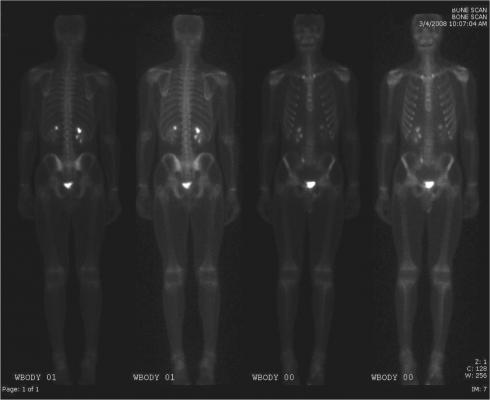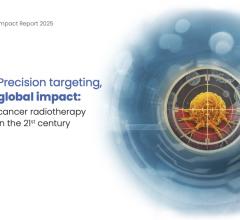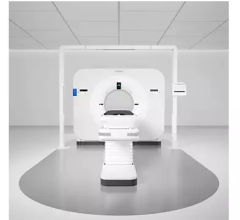
April 17, 2015 — The “Radiation and the Modern Management of Lymphoma” issue (May 1, 2015) of the International Journal of Radiation Oncology • Biology • Physics (Red Journal) is focused on the integral role of radiation therapy in current lymphoma treatment. The Red Journal is the official scientific journal of the American Society for Radiation Oncology (ASTRO).
May 2015 marks 50 years since the first multidisciplinary lymphoma conference, “La Radiotherapie de la Maladie de Hodgkin,” was held in Paris in 1965, which led to a more comprehensive understanding of the cancer’s pathology, staging and treatment.
In the first half of the 20th century, radiation therapy was primarily used to palliate patients’ symptoms because of technical limitations, and it was generally believed that the disease was incurable. During the 1965 Paris conference, the work of individuals such as M. Vera Peters, M.D.; Henry Kaplan, M.D.; and Maurice Tubiana, M.D., Ph.D., demonstrated that a cure was indeed possible using radiation therapy. A classification system was agreed upon using observations about the patterns of spread and new forms of imaging such as the lymphangiogram. This system distinguished between those with localized disease who could be managed by radiation therapy to the affected nodes and the neighboring nodal regions where the disease may also be hiding, and the more advanced disease that would ultimately need chemotherapy for cure. In the early 1960s, chemotherapy regimens, such as MOPP (mechlorethamine, vincristine, procarbazine and prednisone), were used for curative intent in patients with more advanced stage disease. During the next several decades, the integration of radiation therapy with novel chemotherapy was progressively evaluated in a series of trials.
Twenty-six studies and articles are included in this issue of the Red Journal, and they detail the complex role of radiation therapy, including treatment design and delivery, combination therapies and modern imaging, which have led to improved outcomes for patients with Hodgkin lymphoma and patients with non-Hodgkin lymphoma.
Two guidelines from the International Lymphoma Radiation Oncology Group (ILROG) analyze field and dose guidelines. Joachim Yahalom, M.D., FASTRO, et al, address the technical challenges of simulation, volume definition and treatment planning for commonly involved organs in patients with extra-nodal lymphomas, which account for approximately one-third of all non-Hodgkin lymphomas. Lena Specht, M.D., Ph.D., et al, outline recommendations on the delivery of radiation therapy in the treatment of primary cutaneous lymphomas, which require a modified approach compared to treatment for nodal or systemic lymphomas.
Two studies focus on the use of rituximab, which is used in diseases with an excessive amount of B cells including lymphoma. Susan M. Hiniker, M.D., et al, explore the use of post-treatment surveillance studies for patients with limited-stage diffuse large B-cell lymphoma who were treated with chemotherapy with or without rituximab, radiation therapy or combined modality therapy. The authors found that the use of PET scans for post-treatment surveillance was not associated with a survival advantage and suggest limited use of post-treatment surveillance in this patient population.
A study by Naresh Jegadeesh, M.D., et al, identifies predictors of local recurrence to determine which patients with stage III and stage IV diffuse large B-cell lymphoma treated with rituximab alone may benefit from the addition of consolidative radiation therapy. The authors conclude that patients with stage III disease or with disease =5 cm, and patients with <5 cm disease and SUV-max =15 have a higher risk of local recurrence and may benefit from consolidative radiation therapy following chemoimmunotherapy.
In another study, Jeanny Kwon, M.D., et al, explore the role of involved-lesion radiation therapy after R-CHOP chemotherapy (rituximab, cyclophosphamide, doxorubicin, vincristine and prednisone) for patients with limited stage diffuse large B-cell lymphoma. Involved-lesion radiation therapy may reduce toxicity through the use of smaller radiation therapy fields than involved-field radiation therapy. The authors analyzed the rates of progression-free survival and overall survival in patients treated with R-CHOP therapy alone compared to patients treated with R-CHOP followed by involved-lesion radiation therapy. The study’s results suggest that adding involved-lesion radiation therapy after R-CHOP therapy improves both progression-free and overall survival.
Chelsea C. Pinnix, M.D., Ph.D., et al, evaluate predictors of radiation pneumonitis (radiation-induced lung disease) in patients with Hodgkin and non-Hodgkin lymphoma, who are treated with intensity modulated radiation therapy (IMRT) to the thoracic region. The results demonstrate that patients who received salvage chemotherapy for relapsed or refractory disease in addition to IMRT had the highest risk of radiation pneumonitis. Low doses of radiation to large lung volumes was also a predictor of radiation pneumonitis.
“Few malignancies have been examined with the same history and rigor as the lymphomas,” said Anthony L. Zietman, M.D., FASTRO, editor-in-chief of the Red Journal and professor of radiation oncology at Massachusetts General Hospital in Boston. “Meticulous study in a series of well designed trials by radiation oncologists and medical oncologists working together and separately has led us to where we are today. The exceptional studies in this Red Journal issue capture the spirit of investigation that has yielded really meaningful advances for contemporary lymphoma management.”
For more information: www.redjournal.org


 November 04, 2025
November 04, 2025 









